Skin Rejuvenation and Resurfacing
Methods, Benefits, and Considerations
Enhancing skin vitality, removing outer layers, promoting new skin growth
In the quest for youthful and radiant skin, many individuals turn to skin rejuvenation and resurfacing treatments. These procedures are designed to address various skin concerns, ranging from fine lines and wrinkles to uneven skin tone and texture.
Understanding the difference between skin rejuvenation and resurfacing, as well as the diverse treatment methods available, is crucial for anyone considering these transformative procedures.
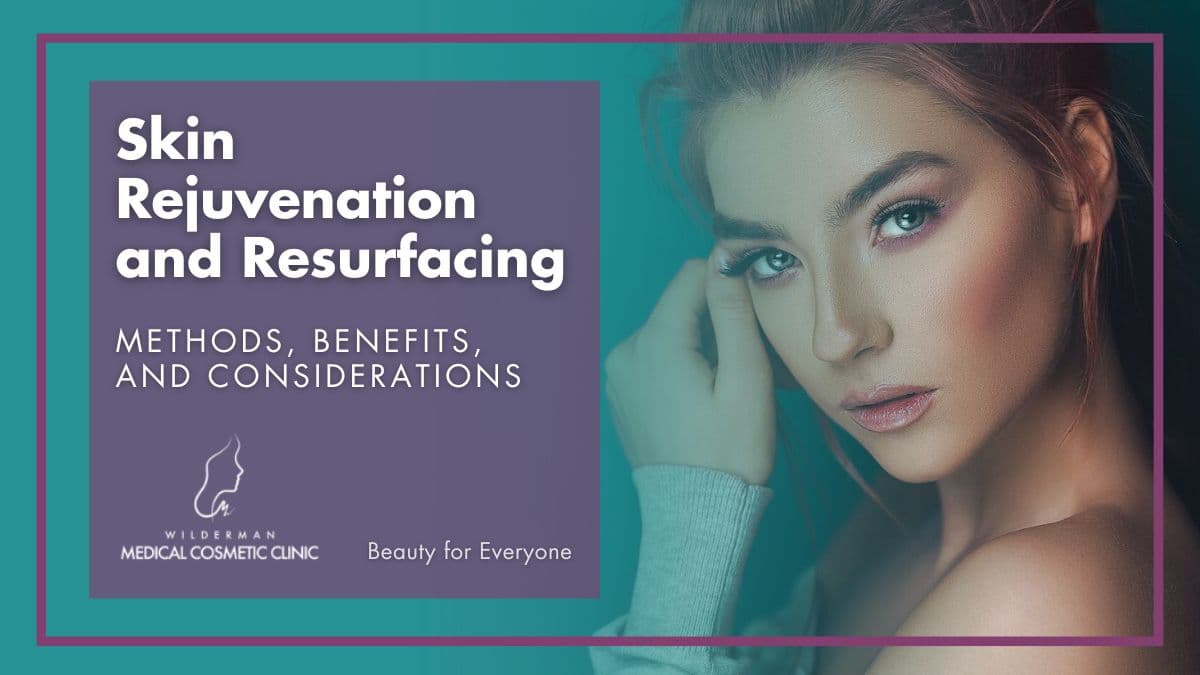
Get immediate answers to your questions about treatment options, costs, expected outcomes, and more.
- Expert Diagnosis
- Customized Treatment Plans
- No Obligation
- Comfort and Privacy
- Immediate Answers
Skin Rejuvenation vs. Skin Resurfacing: What’s the Difference?
Skin rejuvenation and skin resurfacing, although frequently interchanged, denote separate approaches to skincare. Skin rejuvenation is centered on enhancing the holistic appearance and vitality of the skin, working towards achieving a youthful radiance and diminishing noticeable signs of aging.
This process aims to invigorate the skin through non-invasive or minimally invasive techniques, fostering a refreshed and revitalized complexion.
In contrast, skin resurfacing takes a more targeted approach by focusing on the outermost layer of the skin. The primary goal is to eliminate damaged cells and trigger collagen production, ultimately fostering the emergence of smoother and healthier skin.
While skin rejuvenation embraces a comprehensive enhancement of the skin’s overall condition, skin resurfacing delves into the meticulous restoration of the skin’s surface, addressing imperfections at a more profound level.
Together, these distinct processes offer a comprehensive toolkit for individuals seeking to achieve various skincare goals, ranging from a luminous complexion to the refinement of specific skin irregularities.
Common Skin Rejuvenation and Skin Resurfacing Methods
Skin rejuvenation methods are generally non-invasive or minimally invasive procedures that address various concerns such as fine lines, wrinkles, uneven tone, and texture. Here are some common skin rejuvenation methods:
- IPL (Intense Pulsed Light): IPL uses high-intensity pulses of light to target pigment irregularities, sun damage, and blood vessels. It is effective for treating conditions like age spots, sun damage, and certain vascular issues.
- Broadband Light (BBL) Therapy: Broadband Light, or BBL, therapy uses intense pulses of light to target various skin concerns, including pigmentation irregularities, sun damage, and vascular issues. It effectively treats conditions like age spots, freckles, and redness, promoting a more even skin tone and texture.
- Chemical Peels (Light/Medium): Chemical peels involve applying a chemical solution to the skin, which exfoliates the outer layer. This process helps improve skin texture, reduce fine lines, and address issues like acne scars and uneven pigmentation.
- Microdermabrasion: Microdermabrasion is a mechanical exfoliation method that uses a device to remove the outer layer of skin, promoting the growth of smoother and more youthful skin. It is effective for mild skin imperfections and dull complexion.
- Microneedling: Microneedling involves creating tiny, controlled punctures in the skin, stimulating collagen production, and promoting the natural healing process. This method is beneficial for improving skin texture, reducing scars, and minimizing fine lines.
- Dermal Fillers: Dermal fillers involve injecting substances like hyaluronic acid beneath the skin to add volume and reduce the appearance of wrinkles and fine lines. They are commonly used for facial rejuvenation and restoring lost facial volume.
- Botulinum Toxin (Botox): Botox injections temporarily paralyze muscles, reducing the appearance of dynamic wrinkles, such as crow’s feet and frown lines. It is a popular method for achieving a smoother and more youthful facial appearance.
- Fractional Laser Therapy: Fractional laser therapy targets small areas of the skin with laser beams, stimulating collagen production and promoting skin renewal. It is effective for improving skin texture and reducing the appearance of fine lines and scars.
- Radiofrequency (RF) Skin Tightening: RF technology delivers heat to the deeper layers of the skin, promoting collagen production and tightening loose or sagging skin. It is commonly used for facial and body contouring.
- PRP (Platelet-Rich Plasma) Therapy: PRP therapy involves extracting a small amount of the patient’s blood, processing it to concentrate platelets, and then injecting the PRP into the skin. It promotes collagen production and accelerates the healing process, improving skin texture and tone.
- Ultrasound Tightening and Skin Resurfacing: Ultrasound energy targets specific layers of the skin, promoting collagen production and improving skin tone and texture. It is a non-invasive option with minimal downtime.
- Ablative Laser Resurfacing: Ablative lasers remove thin layers of skin, addressing wrinkles, scars, and pigmentation issues. The procedure promotes collagen production and results in significant skin rejuvenation. It is particularly effective for more severe skin conditions but may require a longer recovery period.
- Fractional Laser Resurfacing: Similar to ablative lasers, fractional laser resurfacing targets small areas of the skin with laser beams. This approach leaves surrounding tissue intact, reducing downtime compared to traditional ablative lasers while still promoting collagen production and skin renewal.
- Chemical Peels (Deep): While chemical peels are often associated with skin rejuvenation, deep chemical peels penetrate more profoundly, reaching the deeper layers of the skin. These peels are effective for addressing severe wrinkles, sun damage, and certain types of scars.
- Dermabrasion: Dermabrasion is a mechanical exfoliation method that involves removing the outer layers of the skin with a high-speed rotating brush or diamond wheel. It is particularly effective for treating deep scars, wrinkles, and certain pigmentation issues.
- CO2 Laser Resurfacing: Carbon dioxide (CO2) lasers deliver targeted beams of light to remove layers of skin, effectively treating wrinkles, scars, and uneven pigmentation. This method provides more dramatic results but may require a longer recovery time.
- Morpheus8: This combines microneedling with radiofrequency energy to penetrate deeper layers of the skin. It stimulates collagen production, addresses wrinkles, and tightens loose or sagging skin.
- Cryotherapy: Cryotherapy involves freezing the skin to remove outer layers, promoting new skin growth. It is used to treat certain precancerous skin conditions and can improve skin texture.
These skin resurfacing methods vary in intensity and recovery time, and the choice of technique depends on the specific skin concerns and the desired outcome.
These methods can be used individually or in combination to create personalized treatment plans based on individual skincare needs and goals. Consultation with a qualified skincare professional is essential to determine the most suitable approach for achieving desired results.
Conditions Treated by Skin Rejuvenation and Resurfacing
Skin rejuvenation and resurfacing treatments are versatile and can effectively address a spectrum of skin concerns, providing individuals with tailored solutions for a radiant and revitalized complexion.
Some of the specific conditions that these treatments can effectively target include:
- Fine Lines and Wrinkles: Skin rejuvenation methods, such as microneedling and dermal fillers, stimulate collagen production and restore volume, reducing the appearance of fine lines and wrinkles for a smoother complexion.
- Sun Damage and Age Spots: Broadband Light (BBL) therapy, chemical peels, and laser treatments are adept at targeting and diminishing the effects of sun damage, including age spots, sun spots, and hyperpigmentation, resulting in a more even skin tone.
- Acne Scars: Skin resurfacing techniques like fractional laser therapy, dermabrasion, and deep chemical peels can effectively address acne scars by removing damaged skin layers and promoting the growth of new, healthier skin, diminishing the appearance of scars over time.
- Uneven Skin Tone and Texture: Chemical peels, microdermabrasion, and microneedling work to exfoliate the skin, promoting a more even tone and smoother texture. These methods enhance the overall quality of the skin by addressing issues like roughness and irregular pigmentation.
- Enlarged Pores: Laser treatments, especially fractional laser therapy, can help reduce the size of enlarged pores by stimulating collagen production and improving skin elasticity. This leads to a more refined and smoother skin texture.
- Rosacea: Intense Pulsed Light (IPL) therapy is particularly effective in treating the redness and visible blood vessels associated with rosacea. It can help reduce flushing and improve overall skin tone.
- Sun-Induced Redness and Sensitivity: Laser treatments, including BBL therapy, can alleviate sun-induced redness and sensitivity, providing relief for individuals with conditions like sunburn or persistent redness due to sun exposure.
- Stretch Marks: Microneedling and laser therapies are valuable in addressing the appearance of stretch marks by stimulating collagen production and promoting skin regeneration, leading to improved texture and reduced visibility.
- Dull or Tired-Looking Skin: Chemical peels, microdermabrasion, and certain laser treatments can rejuvenate dull or tired-looking skin by promoting exfoliation and enhancing overall skin radiance.
- Melasma: Chemical peels and laser treatments can target hyperpigmentation concerns like melasma by reducing the appearance of dark patches and promoting a more uniform skin tone.
- Loose or Sagging Skin: Radiofrequency (RF) skin tightening and ultrasound skin tightening treatments can effectively address loose or sagging skin by stimulating collagen production, resulting in a firmer and more lifted appearance.
- Seborrheic Keratosis: Certain laser treatments can target seborrheic keratosis, non-cancerous growths that appear as rough or wart-like lesions on the skin, helping to improve skin texture.
- Freckles and Lentigines: BBL therapy and laser treatments are effective in reducing the appearance of freckles and lentigines (age spots), providing a more even and youthful skin complexion.
- Birthmarks: Laser treatments can be utilized to lighten or remove certain types of birthmarks, such as pigmented nevi or vascular birthmarks, for a more uniform skin tone.
- Actinic Keratosis: Chemical peels and certain laser treatments can target precancerous skin lesions like actinic keratosis, promoting skin renewal and reducing the risk of skin cancer development.
- Volume Loss in Hands: Dermal fillers can be used to restore volume in the hands, reducing the appearance of bony prominences and providing a more youthful and rejuvenated look.
Each condition requires a specific approach, and the choice of treatment method depends on factors such as the severity of the condition, skin type, and individual preferences. Consulting with a qualified skincare professional is essential to determine the most suitable treatment plan and achieve optimal results.
Potential Risks
Engaging in skin rejuvenation and resurfacing treatments can provide remarkable results, but it’s essential to be aware of potential risks associated with these procedures. While the majority of individuals experience minimal side effects, there are considerations to keep in mind:
Redness and Irritation: Redness and mild irritation are common after many skin rejuvenation treatments. This is typically a temporary response as the skin reacts to the procedure. Using recommended post-treatment skincare and avoiding sun exposure can help alleviate these effects.
Swelling: Swelling may occur, especially with more intensive procedures like laser treatments or deep chemical peels. This is a normal response as the skin undergoes the healing process. Elevating the treated area and applying cold compresses can assist in reducing swelling.
Pigmentation Changes: Changes in pigmentation, such as hyperpigmentation or hypopigmentation, can occur. This is more likely with certain laser treatments and chemical peels. Sun protection is crucial post-treatment to minimize the risk of pigmentation changes.
Infection: Infection is a potential risk, particularly when the skin’s protective barrier is compromised. Following proper post-treatment care instructions, keeping the treated area clean, and avoiding touching or scratching the skin are essential measures to prevent infections.
Scarring (More Common with Aggressive Resurfacing Methods): Aggressive resurfacing methods, such as deep chemical peels or ablative laser treatments, carry a higher risk of scarring. Proper wound care, avoiding sun exposure, and adhering to the recommended recovery period are critical in minimizing the risk of scarring.
Bruising: Bruising can occur, especially with treatments involving injections (e.g., dermal fillers). While bruising is generally temporary, individuals prone to bruising may experience more prolonged discoloration.
Allergic Reactions: In rare instances, individuals may experience allergic reactions to the substances used in certain treatments, such as chemical peels or topical solutions. Patch testing before the procedure can help identify potential allergies.
Persistent Redness: Some individuals may experience persistent redness, especially with certain laser treatments. This can be a sign of prolonged inflammation and may require additional post-treatment care.
Unsatisfactory Results: While not a direct health risk, there is the possibility of unsatisfactory results. Managing expectations and thoroughly discussing treatment goals with a skin care professional can help minimize this risk.
Before any procedure, a comprehensive consultation should be conducted to assess individual suitability, discuss potential risks, and establish realistic expectations for the outcome. Additionally, following post-treatment care instructions diligently is key to minimizing risks and ensuring a smooth recovery process.
What to Expect Before, During, and After Treatment
Embarking on a skin rejuvenation or resurfacing journey involves a series of steps that span from the initial consultation to the post-treatment recovery. Understanding what to expect at each stage can help individuals prepare for a positive experience.
Before Treatment:
Consultation with a Skincare Professional: The process typically begins with a thorough consultation with a skincare professional. This involves discussing the individual’s skincare goals, assessing the skin’s condition, and determining the most suitable treatment plan. The professional will consider factors such as skin type, medical history, and any previous treatments.
Discontinuation of Certain Medications and Skincare Products: To minimize the risk of adverse reactions, the skincare professional may recommend discontinuing certain medications, such as blood thinners, and specific skincare products in the days leading up to the treatment. This ensures the skin is in the optimal condition for the procedure.
Sunscreen Use to Protect the Skin: Sun protection is emphasized before the treatment. Applying a broad-spectrum sunscreen with a high SPF helps safeguard the skin from harmful UV rays and minimizes the risk of post-treatment complications, such as pigmentation changes.
During Treatment:
Duration: The duration of the treatment varies depending on the specific method chosen. Some procedures may take only a short amount of time, while others, especially more extensive treatments, may require a longer session. The skincare professional will provide a clear timeline during the initial consultation.
Sensation: During the treatment, individuals may experience sensations ranging from mild discomfort to more intense feelings, depending on the selected procedure. Many procedures incorporate numbing agents or cooling technologies to enhance comfort, but it’s essential to communicate any discomfort with the skincare professional during the session.
After Treatment:
Redness and Swelling: Post-treatment, it is common to experience redness and swelling in the treated area. This is a natural response as the skin undergoes the healing process. The intensity and duration of these side effects depend on the chosen treatment method.
Post-Treatment Care Instructions: Following the procedure, individuals will receive specific post-treatment care instructions from the skincare professional. This may include guidelines on cleansing the skin, applying prescribed ointments or creams, and avoiding certain activities that could compromise the treated area.
Avoiding Sun Exposure: Sun protection continues to be a critical aspect of post-treatment care. Direct sun exposure can exacerbate redness, swelling, and the risk of pigmentation changes. It is advisable to avoid prolonged sun exposure and use protective measures such as hats and sunscreen when outdoors.
Follow-up appointments: Adhering to post-treatment care guidelines and attending any scheduled follow-up appointments is vital for ensuring optimal results and minimizing potential risks.
Open communication with the skincare professional throughout the process allows for a more personalized and successful skincare journey.
How Long Do Results Typically Last?
The duration of results from skin rejuvenation and resurfacing treatments can vary widely based on the specific procedure, individual factors, and maintenance efforts.
Here’s a general overview of how long results typically last for some common treatments:
Dermal Fillers: Results may last anywhere from six months to two years, depending on the type of filler used and the treated area. Regular touch-up sessions are often recommended to maintain optimal results.
Botox (Botulinum Toxin): Botox results typically last three to six months. Follow-up treatments are necessary to sustain the muscle-relaxing effects and uphold a smoother appearance.
Chemical Peels: Superficial peels may provide results for a few weeks to a few months. Deeper peels can yield longer-lasting effects, ranging from several months to a year or more.
Non-Ablative Laser Treatments (e.g., Fractional Laser, BBL): Results from non-ablative laser treatments can last several months to a year, depending on the specific treatment goals. Multiple sessions may be needed for optimal outcomes.
Microdermabrasion and Microneedling: Effects from these treatments are progressive, and a series of sessions may be required. Results can last several months, and maintenance sessions may be advised.
Ablative Laser Resurfacing: Ablative laser treatments can provide more enduring results, lasting one to two years or more. The recovery time is typically longer, but the benefits can be significant.
Radiofrequency (RF) and Ultrasound Skin Tightening: Results from these treatments can last from six months to over a year. Follow-up sessions may be recommended to sustain the tightened skin.
It’s crucial to understand that individual responses to treatments vary, and lifestyle factors, skincare routines, and overall health can influence the longevity of results. Regular follow-up appointments and consultations with a skincare professional are essential to assess the effectiveness of the treatment and determine if any touch-up sessions are needed.
Additionally, adopting a consistent skincare routine, protecting the skin from sun exposure, and following post-treatment care instructions contribute to prolonging the benefits of the procedures.
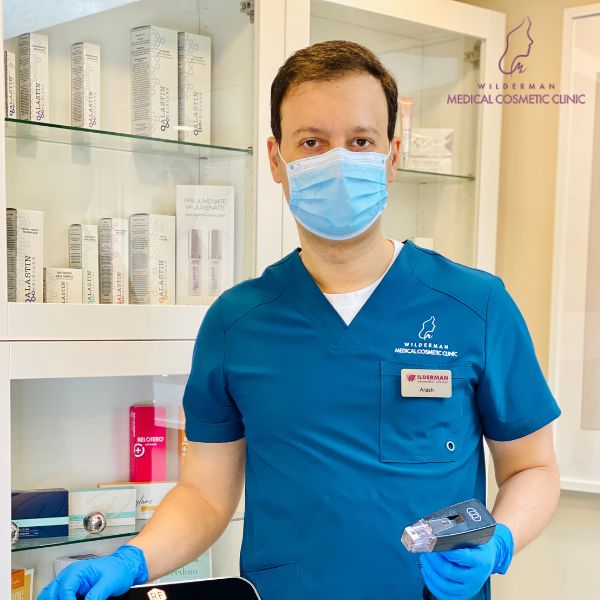
We will take a closer look at each skin rejuvenation method below. The above methods can be combined and some are recommended over others depending on your skin type and goals.
The great thing about options though… we will find the perfect option for you!
Advantages to Skin Rejuvenation
Skin rejuvenation, let’s break it down. What are the advantages?
It’s easy to say the advantage is healthy glowing skin because that’s something everyone is striving for. When you look in the mirror what will you notice?
Besides the obvious glowing skin… you will see an improvement to your skin tone and texture (whether you need to even out coloring or smooth out different areas), clear up age spots and acne scars, eliminate and smooth fine lines and wrinkles, and reduce pore size.
Skin rejuvenation may be a broad term but it covers a range of problem areas. The most beneficial advantage to skin rejuvenation is the confidence boost you’ll experience every time you look in the mirror.
Botox and Skin Rejuvenation
Botox is an amazing treatment and a very popular one at that. Results are fast and efficient when it comes to reducing wrinkles.
It uses a well-designed safe chemical called Botulinum toxin. This chemical temporarily paralyzes the tiny muscles in your face that contribute to the formation of wrinkles.
Botox is not permanent and the treatment will need to be repeated.
Another Botox bonus?
It can also be used as a preventative treatment for wrinkles and fine lines.
Avoid getting them at all, or at least slow the process down!
Morpheus8 and Skin Rejuvenation
Morpheus8 might not be a household name yet, but it will be!
So, what is Morpheus8?
Morpheus8 is a treatment that involves both RF stimulation and microneedling.
The Morpheus8 procedure stimulates collagen production at a deeper level, resulting in skin tightening and smoothing of present wrinkles. Clients rave about their results.
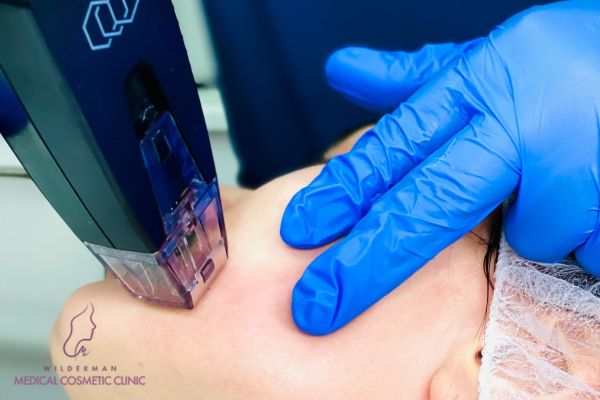
As far as skin rejuvenation treatments go, this one rewinds the clock by giving your skin a more youthful look and transforming your complexion.
Unlike Botox, Morpheus8 results are not immediate. Results will start to show roughly one month after treatment, with the true results showing 3 months after the initial treatment.
Morpheus8 – Effective for Skin Rejuvenation
Morpheus8 has become super popular very quickly because of how effective it is for skin rejuvenation. This is a great treatment for encouraging long term collagen and elastin production for a maintained youthful appearance.
PRP and PRF for Skin Rejuvenation
PRF, Platelet Rich Fibrin, is the newly developed version of its predecessor PRP, Platelet Rich Plasma. They both have their advantages for skin rejuvenation.
While PRP and PRF have similar outcomes and results, the processes and potential treatment combinations differ.
-
PRP results benefit when accompanied by a microneedling treatment.
-
PRF results are at their best after several sessions spaced roughly 6-8 weeks apart from each other.
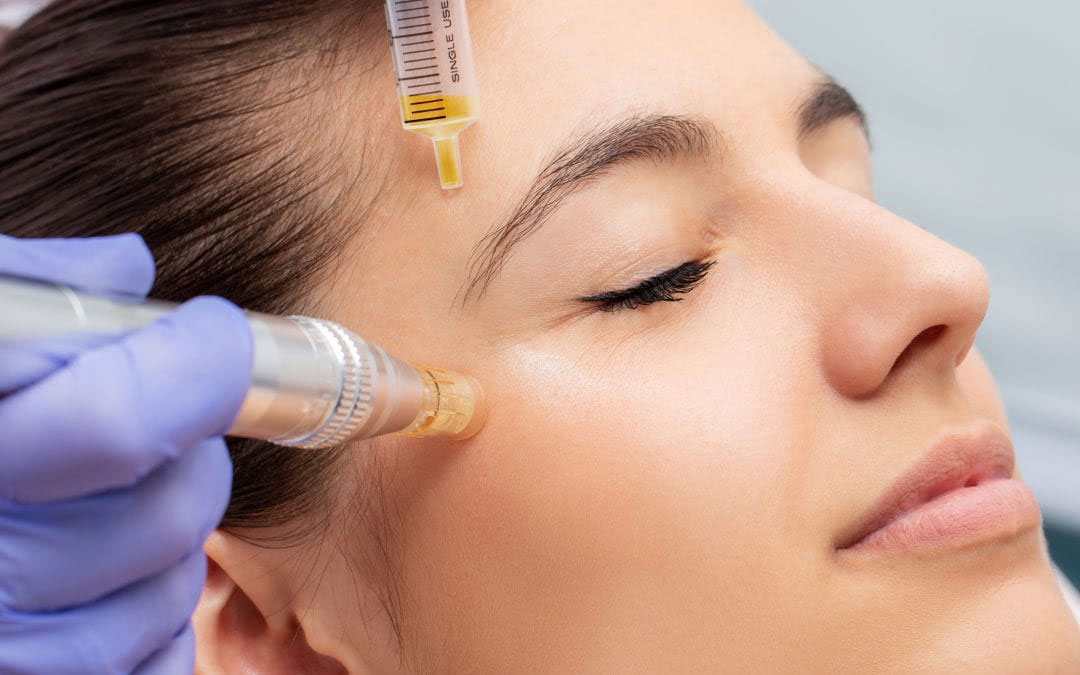
PRF results will begin to appear 6-8 weeks after the initial treatment has been completed. PRF functions by taking growth factors derived from blood naturally, then the PRF is injected into the skin to encourage an increase in collagen production which will revive your skin’s cells and create the skin rejuvenation process.
PRP and PRF are both fantastic anti-aging treatment methods for skin rejuvenation. Deciding which treatment suits you can be decided with the help of our medical aesthetician. Our priority is helping you understand and choose the right treatment that will bring you your desired results.
Mesotherapy and Skin Rejuvenation
Mesotherapy achieves skin rejuvenation through the use of injectables of vitamins, enzymes, hormones, and plant extracts.
The injectables are injected into your face to “melt” fat and restore a smoother, younger-looking complexion.
Mesotherapy requires 4-6 treatment sessions, but results can last 12-18 months after finishing the treatment plan.
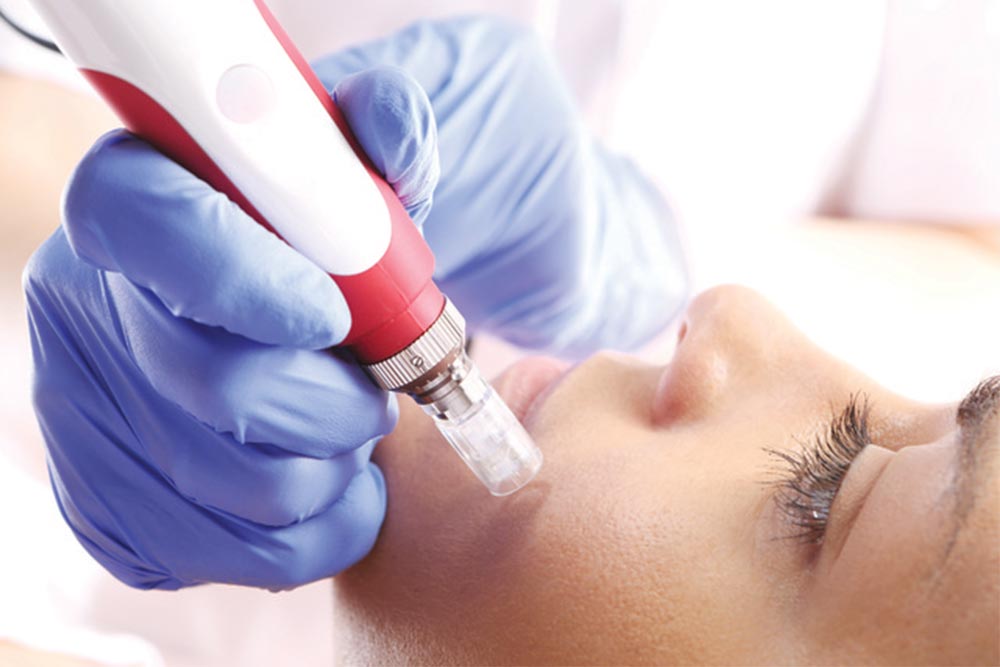
BBL and Skin Rejuvenation
BBL (BroadBand Light), is a photo rejuvenation treatment.
BBL is used to treat a wide variety of skin conditions typically caused by aging and sun exposure. The BBL technology uses the power of intense pulsed light to deliver exceptional results.
BBL’s design to remove and reduce age spots, redness, sun damage, wrinkles, and the effects of rosacea is flawless. It can reduce the appearance of freckles and birthmarks.
The key to achieving long-term results when pursuing the BBL avenue is multiple treatments. Three treatments a year or more will ensure long-lasting results.
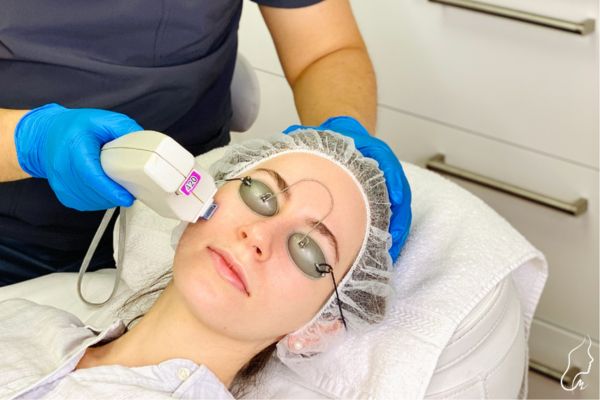
Skin Rejuvenation is for everyone!
It has never been more attainable
Don’t feel overwhelmed with the number of options you have when it comes to skin rejuvenation. Your treatment choice is entirely up to you. We will be happy to book you a free consultation with our skin expert to discuss your skin goals and your personalized treatment plan.
Skin rejuvenation has never been more attainable. If this is something you’ve thought about and dreamed about, nothing is holding you back. Take the first step to the beautiful youthful skin you deserve by booking your appointment today.
Conclusion
Skin rejuvenation and resurfacing methods offer diverse and effective solutions for addressing various skin concerns and achieving a revitalized, youthful complexion.
Common skin rejuvenation methods, including IPL/BBL therapy, chemical peels, and dermal fillers, cater to a wide range of conditions such as fine lines, sun damage, and uneven skin tone. On the other hand, skin resurfacing methods like ablative laser therapy and deep chemical peels are effective for more profound issues like scars and wrinkles.
While these treatments generally have a favorable safety profile, potential risks such as redness, swelling, and pigmentation changes should be considered. Adhering to pre– and post-treatment care instructions, along with avoiding sun exposure, is crucial to minimize complications and optimize results.
Before treatment, consultations with skincare professionals help assess individual suitability and establish realistic goals. Maintenance sessions are often recommended to sustain the effects and address ongoing skincare goals.
In essence, achieving optimal results from skin rejuvenation and resurfacing requires a thoughtful approach, personalized treatment plans, and ongoing collaboration between individuals and skincare professionals (Hassan et al., 2013). With informed decisions and proper care, these procedures can contribute significantly to enhanced skin health and overall well-being.
Reference
Hassan KM, Benedetto AV. Facial skin rejuvenation: Ablative laser resurfacing, chemical peels, or photodynamic therapy? Facts and controversies. Clin Dermatol. 2013;31(6):737-740. doi:10.1016/j.clindermatol.2013.05.011.
Kauvar ANB, Dover JS. Facial Skin Rejuvenation: Laser Resurfacing or Chemical Peel. Dermatologic Surgery. 2001 Feb;27(2):209-212.
American Society of Plastic Surgeons. Skin Rejuvenation and Resurfacing. https://www.plasticsurgery.org/cosmetic-procedures/skin-rejuvenation-and-resurfacing. Accessed 2023 Dec 07.
American Board of Cosmetic Surgery. Skin Resurfacing Guide. Procedure Learning Center. https://www.americanboardcosmeticsurgery.org/procedure-learning-center/non-surgical/skin-resurfacing-guide/. Accessed 2023 Dec 07.
Fountain Aesthetics. Skin Rejuvenation and Resurfacing: Everything You Need to Know. Fountain Aesthetics Blog. https://fountainaesthetics.ca/blogs/skin-rejuvenation-and-resurfacing-everything-you-need-to-know. Accessed 2023 Dec 07.
Related content that may be of interest
What is Botulinum toxin? The neurotoxin that erases wrinkles and alleviates pain – Botulinum toxin is a potent neurotoxin produced by the bacterium Clostridium botulinum. It is widely known for its cosmetic and medical applications. Botulinum toxin exists in several different forms, but the most used ones are Botox, Dysport, and Xeomin.
What are dermal fillers? Youthful boost to your look – Dermal fillers are a type of cosmetic treatment that involves injecting a substance, usually a hyaluronic acid-based gel, into the skin to add volume and smooth out wrinkles and fine lines. Age, lifestyle, and environmental factors can damage the skin over time, contributing to the appearance of lines, wrinkles, or sagging skin.
What is Morpheus8? A Revolutionary Skin Rejuvenation Technology – Morpheus8 is an advanced skin rejuvenation technology that combines micro-needling and radiofrequency (RF) energy to deliver non-invasive facial and body treatments. Developed by InMode, a leading medical technology company, Morpheus8 has gained popularity in the field of aesthetic medicine for its ability to address various skin concerns effectively.

